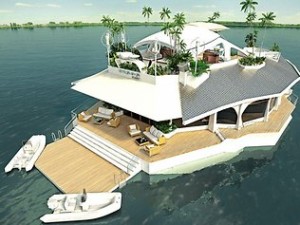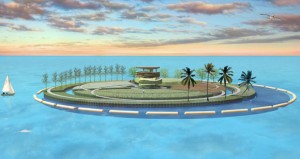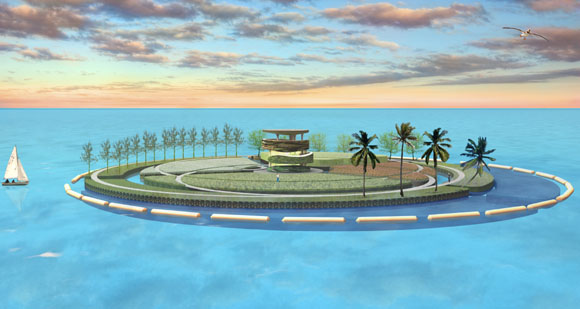It takes up to four weeks for a single sheet of paper to dissolve when thrown into the ocean. It takes a plastic bottle 450 years. Today the evidence of our human presence can be found in the gyres of the oceans, those rotating current zones that lie midway between the continents. The worst to date is the North Pacific gyre with garbage covering the ocean surface and in the water column beneath, an area equivalent to twice the size of the state of Texas. How did the garbage get there? Much of it has come from ships. Why? Here are three reasons:
- Convenience – it is easy for large and small ships to dispose of garbage at sea. Just throw it overboard and let nature take its course.
- Because most ports don’t provide facilities for disposing of garbage from ships the ships use the ocean as a garbage dump.
- Because there has been little in the way of international regulation on the issue of garbage disposal at sea particularly in international waters where no nation has jurisdiction.
MARPOL is the international convention for preventing pollution from ships. It includes airborne and water pollution including garbage. First adopted in 1973 by the International Maritime Organization (IMO), a United Nations agency responsible for safety, pollution prevention and security for the shipping industry, MARPOL has undergone a number of revisions since inception. Changes in 2005 finally imposed a ban on disposal of all forms of plastics at sea. And last year the ban was further extended to prohibit any discharge of garbage into the ocean. Yet despite these efforts garbage continues to be a major ocean problem. Recent surveys show that our coastlines are strewn with the stuff at the rate of 10 tons per 1.6 kilometers (1 mile). Part of the problem is plastic pollution entering the ocean from continental runoff. Another challenge is the limit set within MARPOL related to the size of ships governed by the convention. For example MARPOL covers ships of 12 meters (40 feet) in length and 100 gross tons or greater. Smaller vessels have no restrictions related to on board garbage. And MARPOL has no say on how cities on coastlines handle plastic and other garbage.
Can We Harvest the North Pacific Gyre?
How do we go about cleaning up the plastic in our oceans? One proposal is to collect the plastic floating waste, converting it into in situ building materials for floating islands. A Dutch architectural firm, WHIM, has been doing research to create what it calls recycled islands. It reasons that with over four million tons of plastic afloat in the ocean any attempt to clean up and dispose of the waste will require a massive effort at a prohibitive cost. So instead of scooping the plastic out using a drone like the one I described recently or shipping the skimmed plastic to shore for reprocessing or disposal, WHIM wants to do on site recycling to use the waste to create self-sustaining communities on floating islands. It believes an island measuring 10,000 square kilometers (about the size of the main island of Hawaii) could be built to house eco-refugees from rising sea levels.
This floating island would include renewable energy in the form of solar, wave and wind. Residents would plant crops on its floating surfaces. They would harvest seaweed and develop aquaculture to meat dietary needs. The seaweed farming would not only serve as a food source but also a nutrient and carbon sink filtering out CO2, ammonia, nitrates and phosphorous. And as a primary local industry residents would continue to harvest the plastic waste in the ocean to use to expand their island domain and create other products.

What would be the cost of a floating island the size of Hawaii’s main island? For comparison a 1,000 square meter (approximately 10,000 square feet) floating island currently being offered on the market costs $4.6 million U.S. It can accommodate 12. Adding a perimeter to grow land-based crops is extra. With 1,000,000 square meters to a square kilometer, the cost of accommodating 12,000 people not including space for agricultural pursuits would amount to $4.6 billion. An Hawaiian sized project would be 10,000 times that cost based on existing floating island concepts. Would the cost come down, however, if the raw materials used in creating the island came from the plastic garbage in the North Pacific gyre and if mass production principles were applied? Probably, but it remains a very expensive proposition. So the question to ask is “Is this more WHIMsical than real?” What do you my readers think of floating islands as both a way to deal with the garbage time bomb and a solution for those who may find themselves victims of climate change and rising sea levels? We know that the Maldive Islands are pursuing this course but is what they are doing as crazy as it sounds?


















“So the question to ask is “Is this more WHIMsical than real?” What do you my readers think of floating islands as both a way to deal with the garbage time bomb and a solution for those who may find themselves victims of climate change and rising sea levels? We know that the Maldive Islands are pursuing this course but is what they are doing as crazy as it sounds?”
Might be even crazier. If you want something cheap that floats a long time in the ocean you probably need to make it of glass, not plastic. Recycled broken glass could be re-melted and formed into sealed cylindrical floats 12-inches by 24-inches giving a displacement of 1.57 cu feet. Each glass float would provide about 100-pounds of gross buoyancy. The float itself would weigh about 32-pounds, so each glass float would provide 68-pounds of payload buoyancy. Truckloads of scrap glass should sell for less than $100/ton; so, raw material cost for a ton of scrap glass float payload buoyancy would be about $35. The glass floats would need to transfer their buoyancy to the main structure, which would need to be fashioned of some cost effective marine environment stainless steel, such as 2205. As attractive as all that might sound, glass is only strong in compression. It’s brittle and weak in tension so float attachment systems would have to avoid tension loads. Seems likely no “scrap” material would be as cost effective as just building new barges out of 2205 stainless, which should hold up for a couple of centuries.
The only way to solve the gyre garbage dump problem is for all major nations to impose stiff penalties for ocean dumpers (you can’t trade in our ports if you dump in the oceans!), and if you really want to clean up the mess you would need hundreds of special built nuclear powered skimmer ships collecting and pyrolytically destroying the garbage for a decade or so. This is a case where dilution is probably a fair solution. Just impose standards that there is no dumping of anything that floats or which won’t promptly decompose. The annual carbon load into the atmosphere of burning all flammable garbage at sea would be trivial in contrast to global burning of fossil fuels.